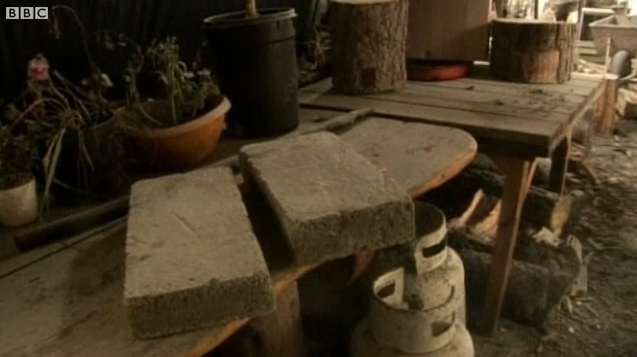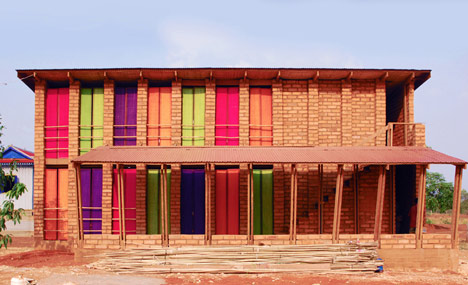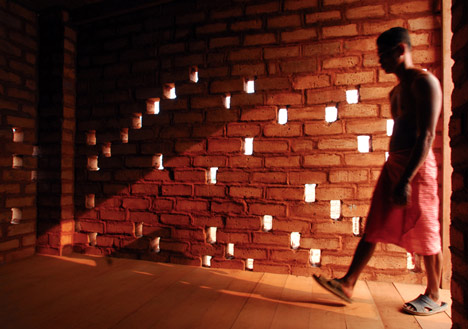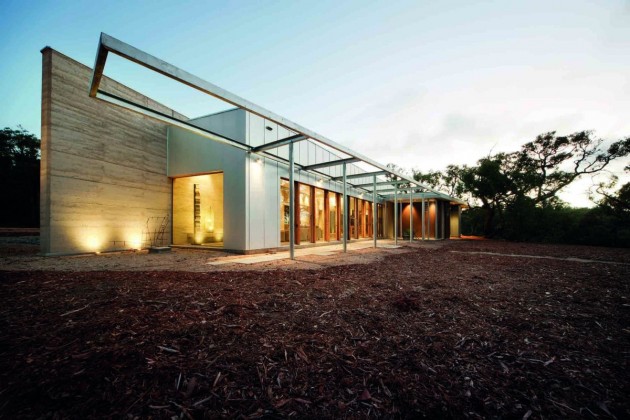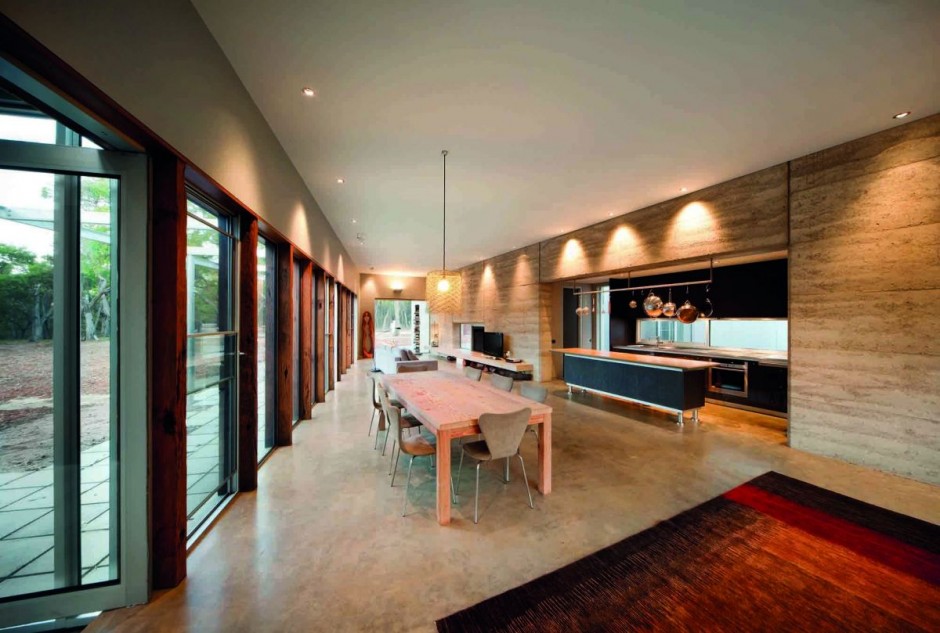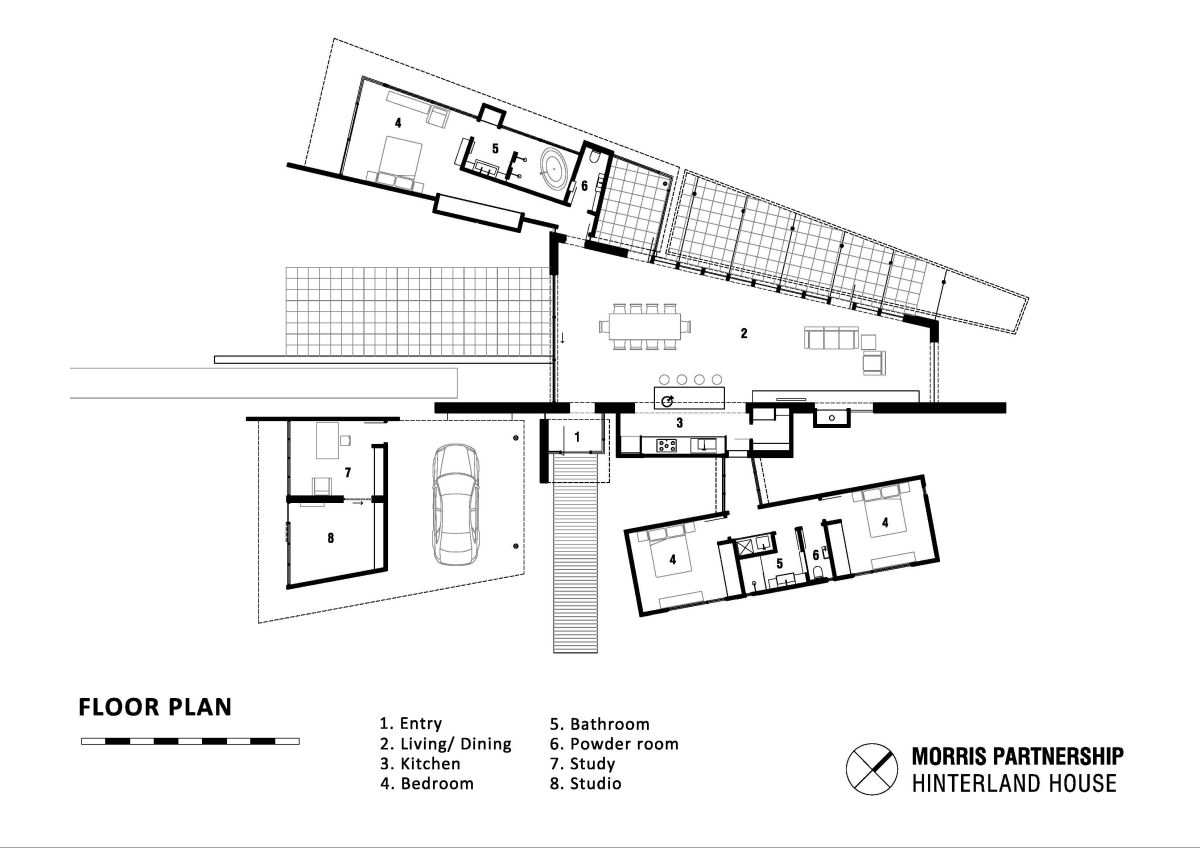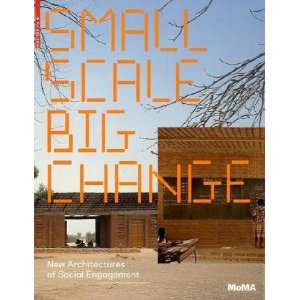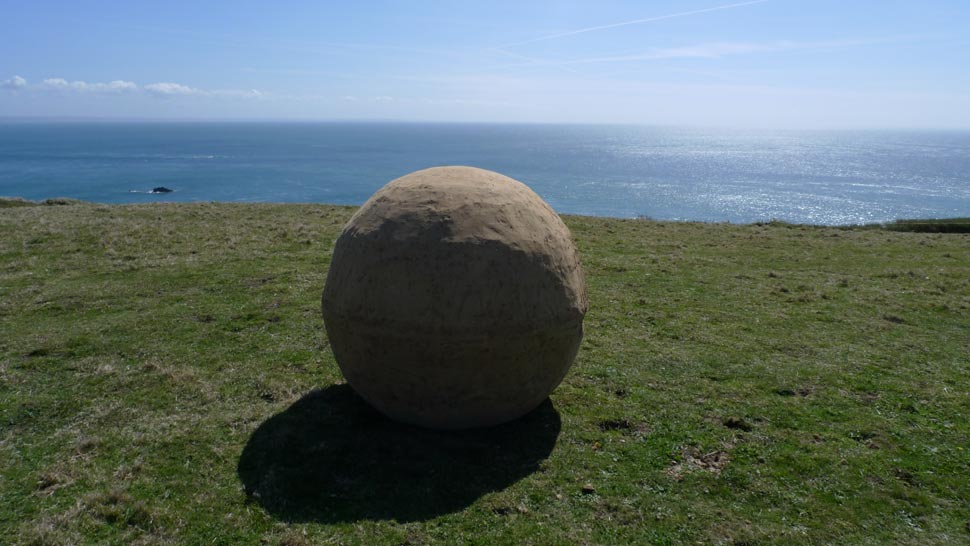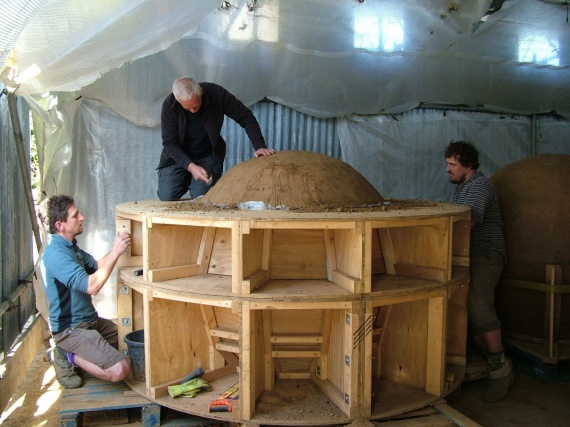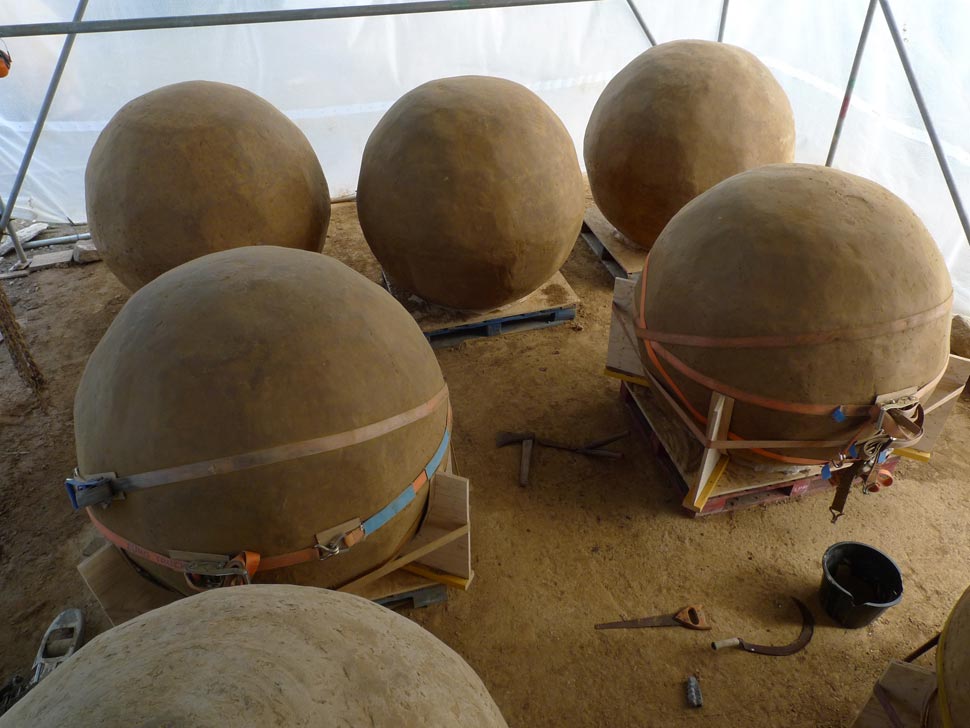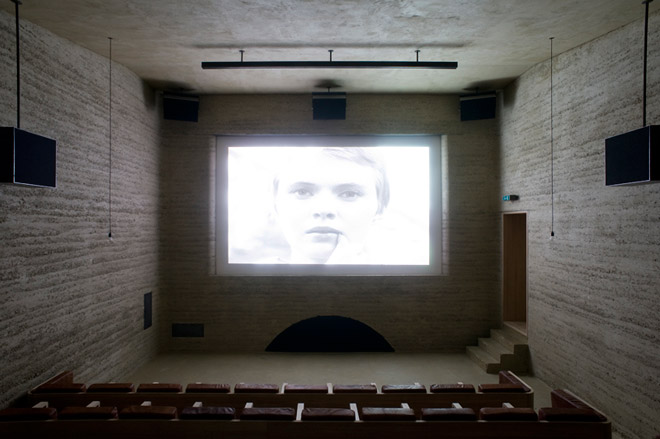
Photography: Bruno Augsburger and Laura Egger
Over two decades ago, the last cinema closed in Ilanz, an Alpine town in the Swiss canton of Graubünden. To satisfy the locals’ cinephile needs, a group of people interested in film and culture formed the Filmclub Ilanz in 1989 and, after staging screenings in makeshift locations (including the town hall), they had a stroke of luck in 2004 in the shape of a 19th century former forge, which had just become vacant. After several years of screenings, they decided to revamp the space, with the help of fellow club members Capaul & Blumenthal Architects, to create a fully fledged cinema, which opened last September.
The ETH Zurich graduates have retained the raw character of the building, creating a cosy screening room and bar on a shoestring. Using local clay and a rammed earth construction method – a sustainable, low-tech building technique with sound-proofing benefits – the project was completed with the help of members of the Filmclub, who also conveniently included a rammed-earth specialist and a stonemason. Seating in the auditorium is padded by sheep-skin covered cushions stuffed by Filmclub members. Meanwhile, paint on the walls of the bar and stage area has been stripped back to reveal the original lime plasterwork of the building and floors are kept bare. The bar itself can be lifted by a manual forklift to make space for a dance floor when there are concerts – just one part of the Cinema Sil Plaz’s rich programme of events.


